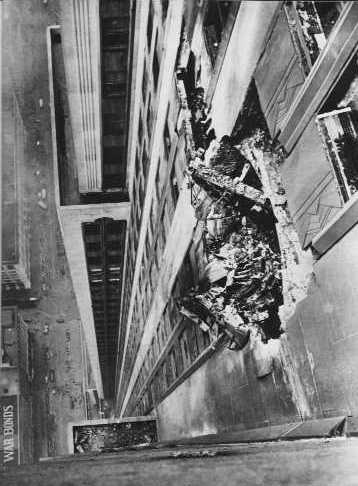AIR TRAFFIC CONTROL
ANNA WRITES... So Jim, tell me how air traffic control works. Why don't planes run into each other? Do you know of any incidences where planes have collided due to poor air traffic control? Who "owns" the air? In international flights, when do the planes switch from being under U.S. air traffic control to another country's air traffic control? And one last question-- When I fly on a plane, why do I always sit in near vicinity of a very poopy baby?
Well Anna, air traffic control is huge and complicated system but I can give you the simplified version of it.

Every commercial airplane must file a flight plan with the air traffic control system. This information includes departure time, destination, flight number, intended airspeed, cruising altitude, and route. That information is entered into a computer and checked by a flight controller to verify there are no conflicts with other flights or weather. When approved, a strip of paper is printed out and handed to the person in charge of ground control.
This person is in charge of all movement on the ground of an airport including vehicles. He will tell the pilot when he can leave the gate, which runway to use, what route to take to get there, and what order the aircraft will be in to take off. Once the pilot has left the gate, headed safely down the taxiway and is ready for take off, that piece of paper is handed off to the local controller.

The local controller is in charge of all planes taking off and landing at that airport. He is responsible for maintaining safe distances between planes as they take off and land. The local controller gives your pilot final clearance for takeoff when it is deemed safe. Once the plane is in the air, it turns on a transponder that will give radar the aircraft's flight number, altitude, airspeed and destination. The airplane is then handed off to the departure controller.

The departure controller is in charge of all aircraft within a 50 mile radius of the airport. Once outside that 50 mile radius, the plane is then handed off to a center controller. Every bit of airspace in this country is monitored by at least one center controller. As the plane get closer to it’s destination, the whole process is reversed until the plane is sitting at the gate.

Besides monitoring all commercial flights in the air, some methods they use to keep aircraft away from each other is to keep them at different altitudes. They may keep north bound flight at odd altitudes (21,000’, 23,000’, 25,000’) and south bound at even altitudes (20,000’, 22,000’, 24,000’).
To complicate things a bit, you also have private aircraft flying around that have no specific flight plan. If I was a private pilot, I could take an airplane up and just go for a joy ride. I may have to file a plan that tells where I intend to fly but it is not specific like the commercial flight plan is. These private pilots are responsible for themselves. It is up to them to know exactly where they are and where they can fly. Commercial airports have airspace around them that is reserved for their traffic only. If a private pilot should stray into one of those areas, he is notified immediately and must vacate that zone. I once had a friend take me up in his private plane and he did just that. We were in Illinois, yet we had strayed into airspace reserved for Lambert, a good 8 to 10 miles away. They let him know right away that he was in violation and directed him to correct his path at once.
As far as international flights go, much of airspace is controlled by someone. Over the ocean, many areas are outside of radar so planes have to report to controllers giving them there location as determined by GPS receivers.
Have there ever been midair collisions? Absolutely. As in any human endeavor, if anything can go wrong, it will. There have been planes that have collided in mid air and planes that have collided on takeoff and landing. Planes have collided with birds, crashed because of pranks, pilots not paying attention,and Air Traffic Control not paying attention. Once a plane crashed into a balloon (hot air I assume), and in 1945 a B-25 crashed into the Empire State building. Of course, these crashes are few and becoming fewer. Commercial airliners have collision avoidance systems that monitor the flight path of the airplane and flight paths of other airplanes on local radar. If the system sees a conflict, it will go into alarm and tell the pilot the best action to take to avoid that conflict.

And finally, why do you always sit near poopy babies? That is because of the system that has been put in place by John Ashcroft’s Patriot Act. As passengers are issued boarding passes, the security computer assesses potential risks Some, such as potty risks become linked with others such as potty mouths. The security computer then seats them all together so air marshals can keep an eye on them. Maybe you should consider distancing yourself from talking dirty.


2 Comments:
Hey there, poopyfart! I will NEVER distance myself from talking dirty, you weenis peepee doodie fart butt nugget!
P.S. Thanks for the answer to my question. It was quite informative.
P.P.S. Prostate gland.
Awesome,
Thank you so much for sharing such an awesome blog...
boom barriers
boom barriers in hyderabad
boom barriers in mumbai
boom barriers in delhi
Post a Comment
<< Home